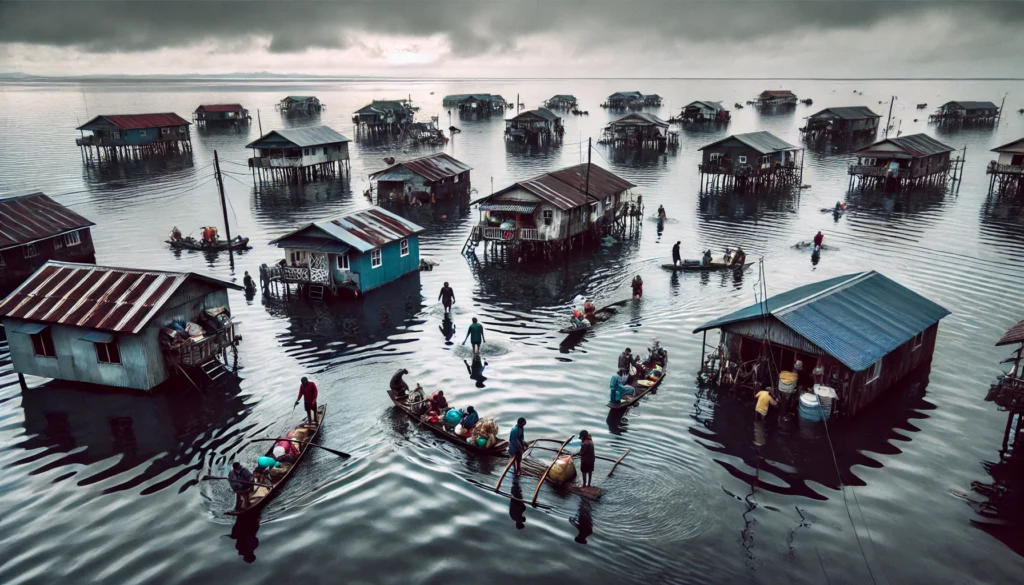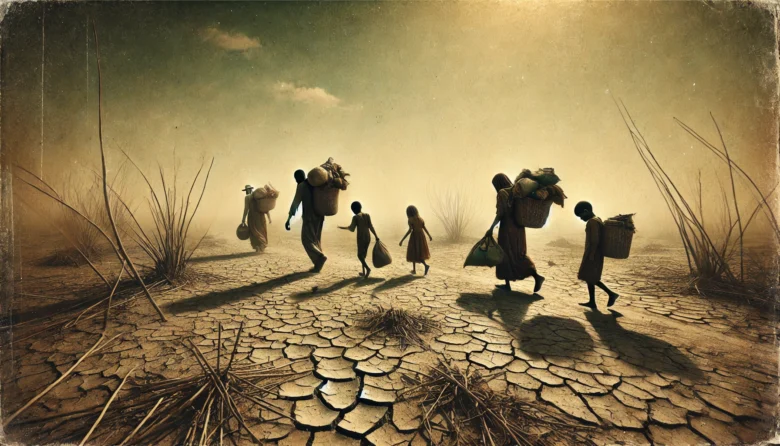Did you know? By 2050, climate migration could displace over 200 million people globally. That’s equivalent to the population of Brazil being on the move due to changing weather patterns!
Welcome to an increasingly undeniable reality: climate migration. This phenomenon, where people are forced to leave their homes due to climate-induced changes, is rapidly reshaping lives across the globe. Whether driven by rising sea levels, prolonged droughts, or devastating hurricanes, the effects of climate change are becoming a major reason people relocate. Let’s dive into how these changes are altering communities and what we can do about it.
What is Climate Migration?
At its core, climate migration refers to the movement of individuals or communities compelled by environmental changes caused by climate change. These changes include extreme weather events, loss of biodiversity, and long-term climatic shifts like desertification. Unlike voluntary migration, climate migration is often a matter of survival.
The Forces Behind Climate Migration
Rising Sea Levels
Coastal communities, particularly in low-lying regions, are at the forefront of climate migration. For example:
The Maldives, an island nation, faces the risk of being submerged entirely within decades.
In the Sundarbans (India and Bangladesh), villagers are being uprooted as seawater inundates their farmlands.
Extreme Weather Events
Events like hurricanes, floods, and wildfires are displacing millions:
Hurricane Katrina in 2005 displaced over 1.5 million people in the U.S., many of whom never returned to New Orleans.
In California, wildfires have led to a dramatic reshuffling of populations as homes are repeatedly lost to flames.

Prolonged Drought and Desertification
Areas dependent on agriculture face significant challenges:
In Sub-Saharan Africa, shrinking water sources have pushed farmers to urban centres in search of better livelihoods.
Similar patterns are emerging in Maharashtra, India, where recurrent droughts are forcing mass migrations.
Loss of Livelihoods
Changing ecosystems disrupt the fishing, farming, and forestry industries. This economic strain often leaves families with no choice but to relocate.
Real-Life Case Studies of Climate Migration
The Pacific Islanders
Rising seas have turned the paradise of Kiribati into a nightmare. Many residents are relocating to neighbouring countries like New Zealand under planned migration programs.
The American Dust Bowl
Though a historical example, the Dust Bowl of the 1930s remains a reminder of how severe drought can devastate entire communities, forcing migrations to cities like Los Angeles.
Syria’s Hidden Climate War
Before the civil war, a prolonged drought from 2006 to 2010 displaced millions of Syrian farmers, fueling urban overcrowding and contributing to societal tensions.
The Ripple Effects of Climate Migration
Social Impact
Overcrowding in urban areas leads to strained infrastructure.
Cultural heritage is often lost as indigenous communities are uprooted.
Economic Strain
Climate migrants may struggle to find jobs, adding pressure to local economies.
Governments must allocate additional funds for disaster management and resettlement.
Geopolitical Challenges
International migration often sparks tension between nations over resources, border policies, and asylum statuses.
Addressing the Crisis: Solutions and Strategies
Mitigating Climate Migration
Investing in Climate-Resilient Infrastructure: Countries like the Netherlands use innovative flood defences to protect coastal cities.
Adapting Agriculture: Drought-resistant crops and sustainable irrigation systems can help farmers cope with changing conditions.
International Cooperation: Frameworks like the Paris Agreement (2015) emphasize reducing greenhouse gas emissions to curb climate change.
Supporting Migrants
Legal Protections: Climate migrants should be recognized under international refugee laws.
Community Engagement: Encouraging inclusion and support for migrants in new areas fosters better integration.
What Can You Do?
Reduce Your Carbon Footprint: Small changes like reducing plastic usage, conserving water, and using public transport make a big difference.
Support Climate-Friendly Policies: Advocate for policies that prioritize renewable energy and sustainability.
Raise Awareness: Share stories of climate migrants to humanize the issue and drive action.
Conclusion
Climate migration is no longer a distant threat but a current reality that touches every corner of the globe. As we continue to feel the effects of changing weather patterns, it’s essential to respond with compassion, resilience, and proactive measures. The world’s response to this challenge will shape not only the lives of millions today but also the future of generations to come.
Author’s Note
This blog is a heartfelt reminder of the challenges faced by climate migrants and a call to action for all of us to play our part. Let’s not wait for nature’s next alarm to act—change starts with awareness.
G.C., Ecosociosphere contributor.
References and Further Reading
- United Nations on Climate Migration
- World Bank Report on Climate Change and Migration
- Evaluate the extent to which the gilded age economy fostered change in the united states in the period from 1870 to 1900 – Sorumatik. https://en.sorumatik.co/t/evaluate-the-extent-to-which-the-gilded-age-economy-fostered-change-in-the-united-states-in-the-period-from-1870-to-1900/13271
- Global Warming Updates: The Latest Climate Change Insights. https://allamericanthinker.com/global-warming-updates-the-latest-climate-change-insights/
- How to Address Climate Migration Through Humane Policy Development – HogoNext. https://hogonext.com/how-to-address-climate-migration-through-humane-policy-development/




